Does your dog participate in agility competitions? Do you have a pup who knows every trick in the book? Maybe you have the world’s most obedient canine. In every case, you probably brag about your dog’s intelligence. Of course, it takes brains to meet those expectations. But how long did it take your dog to reach this stage? That’s the kicker. Because if you want a seat at the table as one of the smartest dog breeds, you need to think fast (yeah, pun intended).
Dog Intelligence
Almost everyone believes they have the smartest dog. We’re an exception. Greyhounds are beautiful, but when it comes to brains? Yeah, there’s a little marble rolling around in there. We’ve lost count of the times she’s narrowly avoided walking into the door (because, of course, we move it when she’s not looking). However, most people? They find doggie smarts in their beloved pups. And for a good reason.
Many dog breeds started out working for their supper. Whether guarding flocks, pulling heavy loads, or accompanying their owners into the hunting field, they had assignments every day. These canines needed to understand the expectations placed on them. Those responsibilities led to advanced brain development. And even if your particular hound isn’t patrolling the grounds for fox anymore, the instincts remain.
The Training Key
Dogs have a natural motivation to please. This allows you to train new behaviors (or UNTRAIN unwanted habits) with relative ease. Of course, you can also train cats – though their motivation centers around an alleviation of boredom. But training, it turns out, is where the smartest dog breeds gain an advantage. They pick up commands at a faster pace, following them without hesitation. And when you reach the top of the pack, dogs have no trouble responding to verbal OR hand cues. The response time remains the same.
“Generally speaking, ‘intelligence’ is measured in dogs based on how many repetitions of a command it takes for them to figure out what you want them to do, and how often they follow learned commands the first or second time you say it. So if you’re teaching them a trick, or kennel training, or anything that involves their memory and recall, some breeds have been fairly consistently shown to do those things faster and more consistently than others.”
~Dennis Riordan, DVM, Riordan Pet Hospital
Ranking the Smartest Dog Breeds
The AKC maintains a listing of smart dogs, primarily composed of the Working Group. This makes sense: early working dogs needed intelligence to carry out their daily chores with little supervision. Shepherds needed to focus on sheering their sheep, administering medication, or overseeing lambs. They couldn’t watch to make sure the dog was keeping an eye out for wolves. But plenty of other dogs out there have what to takes in the smarts department – with no working ancestry. So how to decide who’s the smartest?
In the 90s, psychologist Stanley Coren sat down to consider that problem. He surveyed 199 dog obedience judges, and they compiled a list of different kinds of intelligence:
- Adaptive Intelligence: Problem-solving ability
- Kinesthetic Intelligence: Using the body to carry out actions
- Instinctive Intelligence: Natural brilliance
- Interpersonal Intelligence: Understanding and interacting with others
- Spatial Intelligence: Comprehending visual cues
- Working Intelligence: Ability to follow orders
Using the survey results, Coren wrote a book titled The Intelligence of Dogs.
The Tiers for the Smartest Dog Breeds
Are there a lot of big words involved in the surveys? Sure. But when you look at the definitions, they describing the steps used in training:
- Can your dog understand what you’re asking?
- How are they going to complete the task?
- Is their brain wired TO complete the training?
- Can they follow you – speaking or using a hand cue – or anyone else?
- And how long do they take to respond?
Some dogs have no problem with a few of those elements, while others struggle with ALL of them.
If you’re working with pooches with stubborn streaks, training gets dicey. They MAY have a high level of intelligence, but you’re going to struggle to get consistent results. And if you put your dog in front of someone they don’t know? They’ll likely ignore the person.
So Coren divided dogs into six intelligence tiers:
- Cream of the crop: Dogs learn new commands with less than FIVE tries. They also obey 95% of the time.
- Still smart: Dogs learn new commands within 5-15 tries. They obey around 85% of the time.
- Getting slower: Dogs learn new commands within 15-25 tries. They obey about 70% of the time.
- And now we’re down a bit: Dogs learn new commands within 25-40 tries. They obey around 50% of the time. (Greyhounds fall into this Tier – and it’s pretty accurate)
- Get the patience out: Dogs learn new commands after 40-80 times. They obey around 40% of the time.
- You need over ONE HUNDRED times to teach a new command. And obedience? Maybe 30% of the time.
The Smartest Dog Breeds
You want bragging rights in the neighborhood. And while these dogs get the honor of the smartest dog breeds, that doesn’t mean you’re going to get a natural genius. YOU still have to put in the work. Training’s a two-way street. If you fall off the consistency wagon, lose your patience, or get lazy, your intelligent pup has the brains to take advantage of the situation. And every dog IS different. On the other hand, you could end up with a pooch that lacks motivation and wants to sprawl on the couch. It just depends. No one’s born a genius without study – not even Einstein.
Smartest Dog Breeds: Tier 2
Will you need to work a little more with these members of the smartest dog breeds? Sure. But is working through a new trick 5-15 times better than spending WEEKS on sit or stay? You bet! And these kiddos still count as excellent working dogs. Their distinguished histories set them apart, sparking extra neurons in their grey matter. And with a member from every size group, you’re sure to find a little budding genius to suit your lifestyle.
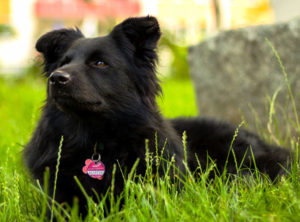
Schipperke 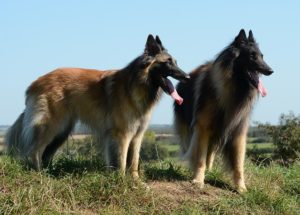
Belgian Tervuren 
English Springer Spaniel 
Miniature Schnauzer 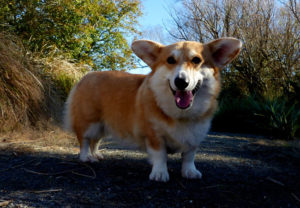
Pembroke Welsh Corgi
- Schipperke: Never judge a book by its cover. Schipperkes (pronounced “skip-per-kees”) may seem small, but they worked in Belgium as boat and dock guards. Many sailors referred to them as “Little Captains.” They learn commands quickly, responding when you call their name. In fact, you NEED to keep them engaged, so their high intelligence level doesn’t grow bored. If you don’t, they turn headstrong. And a stubborn, yappy dog? BAD combination!
- Belgian Tervuren: Also known as the Belgian Shepherd, Tervurens started in Belgium (I know, shocker) as herders and guards. They retain that active lifestyle today, looking for a job to keep their cunning minds from growing bored. In their case, boredom can lead to your Tervuren thinking up new ways to outsmart YOU. Make sure you always give them something active and engaging to focus on.
- English Springer Spaniel: Springers found their calling in the hunting field. They worked as both flushing dogs and retrievers, with birds their particular specialty. As with many hunting dogs, Springers understand whistles. They also train to comprehend non-verbal commands – something crucial when working close to easily-startled game birds. They also learned to work off the side of boats; not too shabby!
- Miniature Schnauzer: While the standard Schnauzer dates back to the 15th century, the Miniature Schnauzer started in the late 19th century. German farmers needed a smaller profile to go after rats and voles around their property. And, as with all hunting dogs, these little pups with their adorable mustaches retain that natural intelligence. While most people don’t keep Miniature Schnauzers around for hunting anymore, they clean up on agility courses – easily recognizing patterns and sprinting through the courses.
- Pembroke Welsh Corgi: Well before Queen Elizabeth II popularized the Pembroke Welsh Corgi, Nordic Spitzes served as the original stock. Joining the Vikings on their raids, they met up with Welsh farm dogs to result in the Corgi pups we know and love today. These scrappy dogs herded dairy cows – a task requiring A LOT of intelligence and problem-solving skills! (Cows don’t like to go where they don’t want to) Today, they establish routines and learn which toys in the house belong to them – and which don’t.
Smartest Dog Breeds: The Second Half of Tier 1
As it turns out, TEN dogs can brag about a spot in Tier 1. So if you want the top of the smartest dog breed pyramid, they’re your go-to pups. I’ve only divided them up for beautiful page symmetry. These pups represent the most excellent working dogs you’ll come across. They’ve proven their mettle in the training rings, competing in obedience and agility competitions time and time again. And while you’ll probably expect to find nothing but Working Dogs among the smartest dog breeds, you’ll find yourself surprised. Intelligence, as it turns out, covers a lot of canine ground!

Australian Cattle Dog 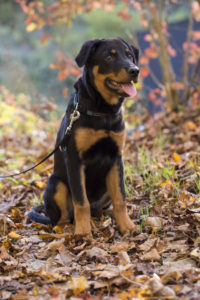
Rottweiler 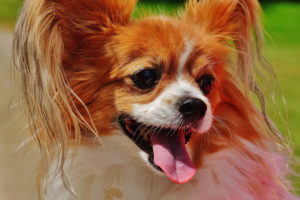
Papillon 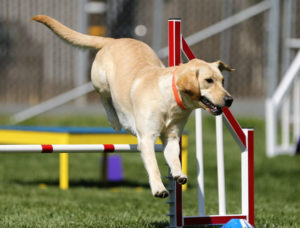
Labrador Retriever 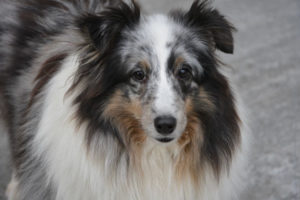
Shetland Sheepdog
- Australian Cattle Dog: Aussies share ancestry with the Australian Dingo. The original British settlers needed a dog capable of handling the unfamiliar heat, intense desert terrain, and unexplored spaces. The result? An intelligent herding dog that followed their assigned cattle for days without supervision! And all of those smarts carry through to today. Besides their spot on the smartest dog breed list, Aussies participate in herding, agility, and flyball competitions. And unless you want to avoid mischievous behavior, you’ll consider one of those outlets.
- Rottweiler: Wait, Rotties? You better believe it. It takes more than brawn to work as an effective guard dog. Rotties learn to recognize the difference between “strange” and “dangerous” in their protective capacity. And as strange as you might find it to believe, they were one of the first dog breeds to work as guide dogs for the blind. With their intelligence, you’ll also find them working as search and rescue dogs. There’s quite a bit of brain packed into that brawn!
- Papillon: Breaking the working dog mold, Papillons hold their own on the smartest dog breed list. While beautiful to look at – they appear in royal portraits as far back as the 16th century – you’ll find cunning little minds between their plumed ears. What so charmed the aristocracy was the Papillon penchant for performing tricks. And it takes intelligence to learn tricks. As a matter of fact, they hold the record as the smartest of the toy breeds!
- Labrador Retriever: Is anyone surprised to find the Labrador on this list? Probably not. Their clever minds make them the perfect family dog, hunting dog, and a match for feline companions. Their original training sent them diving off fishing boats to retrieve harpooned fish. Not many dogs could accomplish that task, even with plenty of training. And now they sweep the ranks in agility, obedience, and retrieval competitions.
- Shetland Sheepdog: While on the smaller side, Shelties pack plenty of brains behind their sweet faces. They got their start in Iceland as a variation of the local sheepdog in the Shetland Islands (though many people mistake them for miniature Collies). And the original job of sheepherder continues to appear on their resume to this day. If you don’t happen to keep animals in need of herding, make sure you channel those clever minds into plenty of activity: agility, flyball, or obedience. They need LOTS of engagement, so they don’t get bored.
Smartest Dog Breeds: The First Half of Tier 1
That’s right – we’ve reached the smartest dog breeds! These canines have the brains to meet any challenge you dream up head-on. Of course, they also require just as much engagement to prevent boredom. That’s the downside to intelligence, after all. If you fail to keep those active minds turning, they decide to employ their thinking differently. And while most of these dogs don’t turn to destruction, finding your pup outwitted you isn’t always pleasant. You can’t leave these kiddos to their own devices. Make sure you find interactive toys.
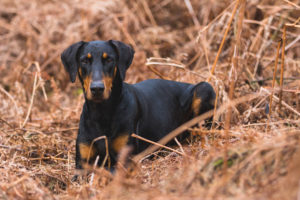
Doberman Pinscher 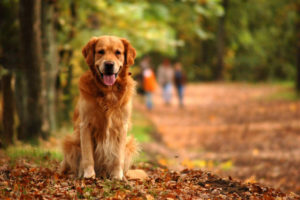
Golden Retriever 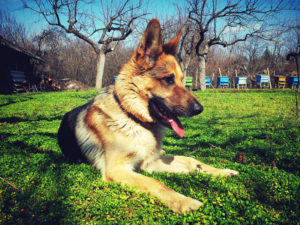
German Shepherd 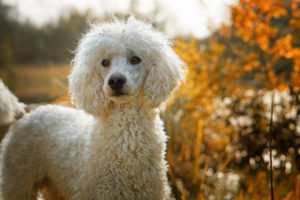
Poodle 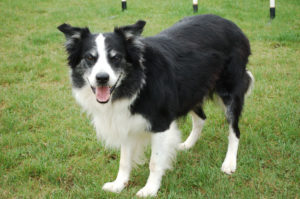
Border Collie
- Doberman Pinscher: Dobies on the smartest dog breed list? It may surprise some people. However, they’re another of the protective pups out there, learning commands and tasks that assure their owners the household and family are in good hands. In World War II, soldiers used Dobies as guards while they slept, guides through unfamiliar terrain, and on patrols around the camp. The dogs barked any time enemies huddled near. That native intelligence remains today.
- Golden Retrievers: You can’t see Labs and not expect to find Goldens. As one of the most popular choices for service and therapy dogs, the breed checks all intelligence boxes. They naturally aim to please in training sessions, and they often problem-solve without any prompting from their owners. You can safely leave them around small children, little household pets, or even alone. They need regular exercise, but their calm demeanor finds them tops in canine popularity.
- German Shepherd: Believe it or not, Rin Tin Tin owns the spot as the first canine movie star. The popular German Shepherd used the breed’s quick-learning skills and natural athleticism to sneak into the hearts of the TV-viewing public. And going through repetitive television takes without losing enthusiasm? That takes WORK! Good thing German Shepherds are up to the task. They fill places in service work, patrol as guard dogs, stand beside our military soldiers, and serve with police forces. All of that takes A LOT of intelligence.
- Poodle: Okay, so the silly haircut fools a lot of people. But Poodles have earned second place on the smartest dog breed list. They’ve worked as hunters, herders, military dogs, healers, service dogs, and even on the stage. They have a knack for problem-solving that makes them a cinch to train. And when you consider how much they love their families and want to please, you’ll see your poodle picking up any new trick in a heartbeat.
- Border Collie: No question about it: the smartest dog breed out there is the Border Collie. Shepherds throughout Scotland and Wales have used these dogs for CENTURIES. They learn cues fast, pick up routines, and often perform tasks without supervision. In the United Kingdom, you can watch the Crufts International, where border collies sweep through herding competitions – responding to complicated whistles and non-verbal commands. And if you want stunning, look at Chaser. This Border Collie knows 1,022 different words!
E=M Canine Squared
Maybe you don’t have one of the smartest dog breeds. Or maybe you DO! Intelligent pups result from time, patience, and work. As the two of you bond and train together, you form a relationship of trust. And who knows where that work may lead? You could end up with the next obedience champion! Or even an agility pro!
Even if you don’t happen to have a “super-smart” breed.




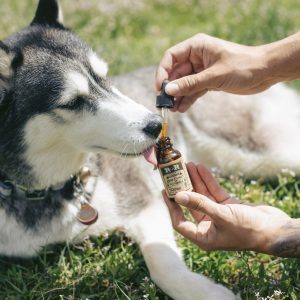







No comment yet, add your voice below!